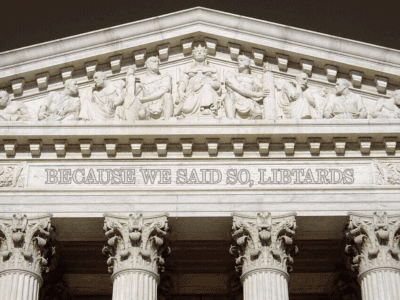MAGA vs NOAA, Executive Orders, and Growing IRA Support
The Drain is a new weekly roundup of climate and environmental news from Legal Planet.

Trump wants to “Make Weather a Mystery Again.” The news that started leaking last Friday is that the Trump administration wants to break up the National Oceanic and Atmospheric Administration and essentially end NOAA’s climate work by abolishing its primary research office and forcing the agency to instead help boost U.S. fossil fuel production, according to lots of reporting based on budget documents.
“This would really be a decapitation strike against climate research within NOAA,” said my UCLA colleague and climate scientist Daniel Swain who held a 2-hour YouTube livestream yesterday to talk about the past, present, and future cuts he’s expecting. Swain noted that NOAA is already experiencing a drain of something like 40% of staff, which affects basic weather prediction as well as disaster response and preparedness. In some cities, we’re seeing the National Weather Service cease putting weather information, and extreme weather notices, on social media because of staffing shortages. Cancelled contracts with university researchers will mean, among other things, that the Congressionally mandated National Climate Assessment will not be updated in coming years. “What is extraordinary in this document is the level of proposed draconian, really existential cuts to, among other things, weather and climate science in the United States,” Swain said.
 There is a real case to be made to the American people that DOGE should keep its hands off their weather reports. “At least once a day, half of Americans open their phones, tune into the radio, or turn on the TV to check their local weather forecast,” according to YouGov. CNN reports that dismantling NOAA will affect Americans by hurting meteorologists’ abilities in 4 ways: 1) lead time 2) hurricane landfall 3) rapid intensification 4) free accessible data. These proposed cuts could become real within weeks — not months. If you like knowing if there’s rain in the forecast, or about wildfire conditions, or whether to pack a sweater, make some noise.
There is a real case to be made to the American people that DOGE should keep its hands off their weather reports. “At least once a day, half of Americans open their phones, tune into the radio, or turn on the TV to check their local weather forecast,” according to YouGov. CNN reports that dismantling NOAA will affect Americans by hurting meteorologists’ abilities in 4 ways: 1) lead time 2) hurricane landfall 3) rapid intensification 4) free accessible data. These proposed cuts could become real within weeks — not months. If you like knowing if there’s rain in the forecast, or about wildfire conditions, or whether to pack a sweater, make some noise.
NOAA is not the only agency waiting for the other shoe to drop this week. At least 3,200 people have opted to take the Trump administration’s offer to leave the Department of Energy ahead of the guillotine, multiple career staffers told E&E News. (That could backfire on the administration’s own goals for energy dominance and AI agenda even the Washington Examiner reported.)
Folks I keep in touch with at EPA said they’re watching their inboxes “with trepidation” as April 14 was the next deadline for agencies to send their “Agency Reduction In Force and Reorganization Plans” to OMB. Meanwhile, EPA has posted a roster of nearly 50 coal-fired power plants that took the administration’s offer on the “Email us for a free pass on compliance with the Clean Air Act.”
Deep breath. If you’re new here, welcome to The Drain, a weekly news roundup of climate and environmental headlines. It will usually come out on Tuesdays or Thursdays depending on when the flood zone has reached full capacity.
Here’s what else I’m seeing…
No, Trump cannot “sunset” or abolish regulations using “Because I say so,” but he’s trying… Some of the people I trust most on these kinds of things will tell you that many of last week’s executive orders are just press releases (and poorly written ones at that) so take it with a box of salt, but the administration’s executive press releases last week included one on showerhead regulations, one directing energy and environmental agencies to “sunset” certain regulations, one aimed at eliminating “anti-competitive regulations” and a memo that Politico Pro says “directed agencies to repeal existing rules that don’t align with a series of recent Supreme Court decisions.” The NYT notes that the orders seek to “scrap a wide array of longstanding energy and environmental regulations” and “face enormous legal hurdles.
Regarding that executive press release taking aim at state climate laws, my Legal Planet colleague Ted Lamm writes that “the search for state and local laws that violate the Constitution, or federal preemption is likely to prove time-consuming and largely fruitless.” In perfect timing, New Mexico Gov. Michelle Lujan Grisham last Thursday signed into law Senate Bill 48, the Community Benefit Fund, which contains $210 million for communities to use for a series of projects to mitigate climate change impacts. This covers things like: training workers in the oil and gas industry for other jobs; reducing oil and gas emissions; improving the electric grid; developing renewable energy projects; modifying public buildings to be more energy efficient; reducing the impacts of climate change on human health, agriculture and the environment; buying EVs and developing charging infrastructure.
Last week brought Exhibit A that Trump sabotaging US leadership on climate doesn’t mean an end to international progress: An accord reached in London under the umbrella of the International Maritime Organization, a UN agency, would require every ship that carries goods across the sea to lower their greenhouse gas emissions or pay a fee/tax. In fact, the US could be pushing China and the EU closer together. A growing trend worth paying attention to is how US-China competition/collaboration could morph into EU-China competition/collaboration. China wants the EU to welcome more of its products during the trade war with the US. In 2025, the EU and China will mark 50 years of diplomatic relations. Could something come out of this at COP30? And Chinese EV sales to Latin America are booming, especially in Brazil as NPR reported last week. China can also punish the US in ways that further hinder our decarbonization goals as we saw late last week when China halted critical rare earth exports that the US needs for EVs and other products. Europe meanwhile is competing on that front. Ugh.
We also saw GOP support grow for the Biden-era tax credits from the Inflation Reduction Act: Republican Sens. Lisa Murkowski and John Curtis are leading a letter to their leadership, alongside Sens. Thom Tillis and Jerry Moran, asking that clean-energy tax credits created by the IRA not be repealed as part of Trump’s agenda, Politico reported. As for which of the beneficial Inflation Reduction Act tax credits are most at risk of repeal as Republicans take strides toward writing an actual budget? Heatmap’s Emily Pontecorvo has a handy chart and story answering that question, noting that Senate Republicans have promised to aim to cut at least $1.5 trillion in spending, which puts IRA dollars at risk.
LA Fires / Rebuilding
- Southern California Edison plans to bury 153 miles of power lines in the area of the Palisades and Eaton Fires to the tune of $860 million-$925 million. Politico’s California Climate has a Q&A with SCE.
- Some insurers are balking at covering removal of toxics from homes that survived the LA fires, as Dave Jones discussed with NPR’s Ayesha Rascoe.
Energy
- March marked the first month ever where fossil fuels made up less than half of U.S. power generation, Canary Media’s Dan McCarthy reported.
- Ann Arbor, Michigan’s City Council approved plans last week to create a sustainable energy utility (SEU) to help local residents use less energy, part of its goal of net-zero emissions by 2030, which the NYT Climate Fix newsletter wrote about.
- The LA Times is raising questions about why all five of Newsom’s appointees to the state Public Utilities Commission live in Northern California? Is that lack of representation?
California
- Paging Ezra Klein: the California High-Speed Rail Authority’s new leader has launched “aggressive and dramatic” efforts to accelerate construction of the bullet train, writes Ray LaHood, the former transportation secretary. He says no one is paying attention to some big changes underway. California’s high-speed rail debacle is a major storyline in “Abundance” the new book by Klein and Derek Thompson that attempts to diagnose why progressives can’t build things fast.
- In an early celebration of Earth Day, the California Coastal Commission walloped oil company Sable Offshore Corp. with a record $18 million fine for repeatedly defying orders to stop work on the corroded pipeline in Santa Barbara that caused a major oil spill nearly a decade ago. During the five-hour public hearing, the commission alleged that Sable ignored multiple cease-and-desist orders and continued repairing the corroded pipeline, CalMatters’ Alejandro Lazo reported.
COP30
- Thousands of Indigenous people marched Tuesday in Brazil’s capital, demanding the state guarantee and expand their rights to traditional lands as part of the solution to the world’s climate crisis.
🗞️Other stories, studies, policy papers
- A new spate of state legislation threatens to kneecap efforts to try to better understand the risks and benefits of geoengineering. And many of these bills are in red states, rooted in conspiracy theories based on bogus science, our friend Craig Segall tells E&E News’ Chelsea Harvey.
- Is there a way for Big Law to solve its collective-action hurdle when resisting the Trump administration? Why Coordinated Resistance by Law Firms to The Trump Administration’s Targeted Executive Orders Against BigLaw Would Not Run Afoul of Antitrust Restrictions | Vikram David Amar | Verdict | Legal Analysis and Commentary from Justia
📰Media Industry News
- Spanish-language network Noticias Telemundo launched a new program “Ahora: Planeta Tierra” ( Now: Planet Earth), hosted by veteran environmental journalist Vanessa Hauc. Covering Climate Now notes “It’s a savvy business move, given that surveys have long found that Hispanic people are the US demographic group that cares most about environmental issues.”
- Heatmap News won a national magazine award last week for “Decarbonize Your Life,” it’s explanatory journalism feature that both walks readers through ways to reduce their carbon footprints and reframes the goal: not to absolve carbon sins but to exercise consumer power.
- The first installment of the New York Times’ “50 States, 50 Fixes” project was published last month. It highlights climate and environmental solutions across the U.S.
From UCLA
Ted Parson wrote about why he teared up at the board while teaching about the Keeling Curve during his International Environmental Law class.
Jonathan Zasloff reported on the loony or cynical orders of Interior Secretary Doug Burgum — you decide.
I wrote a profile of two UCLA Law students who helped write a new state bill that targets air pollution from aggregate recycling facilities. SB 526 gets its first hearing on April 23 and the students will testify as expert witnesses.
Jim Salzman was elected to the prestigious American College of Environmental Lawyers. ACOEL just announced the election of 18 new fellows – only two from academic institutions. He joins Ann Carlson, Mary D. Nichols, and Sean Hecht as UCLA Law professors elected to ACOEL — if any law program in the country has as many members, it’s news to us!
🗓️Events
April 15: Yale Program on Climate Communication webinar: “Local Governments Engaging Communities & Leading Climate Change Communication”
April 16: UCLA Luskin Summit: “Guiding an Equitable Recovery in L.A.”
April 21 – 27: Covering Climate Now’s Joint Coverage Week
April 22: “Earth Day” / The Climate Center’s California Climate Policy Summit in Sacramento
May 12-15: The Degrees Global Forum on SRM / geoengineering in Cape Town, South Africa
June 2-4: Annual Hollywood Climate Summit
June 6: Deadline for California bills to clear the senate and assembly






Reader Comments